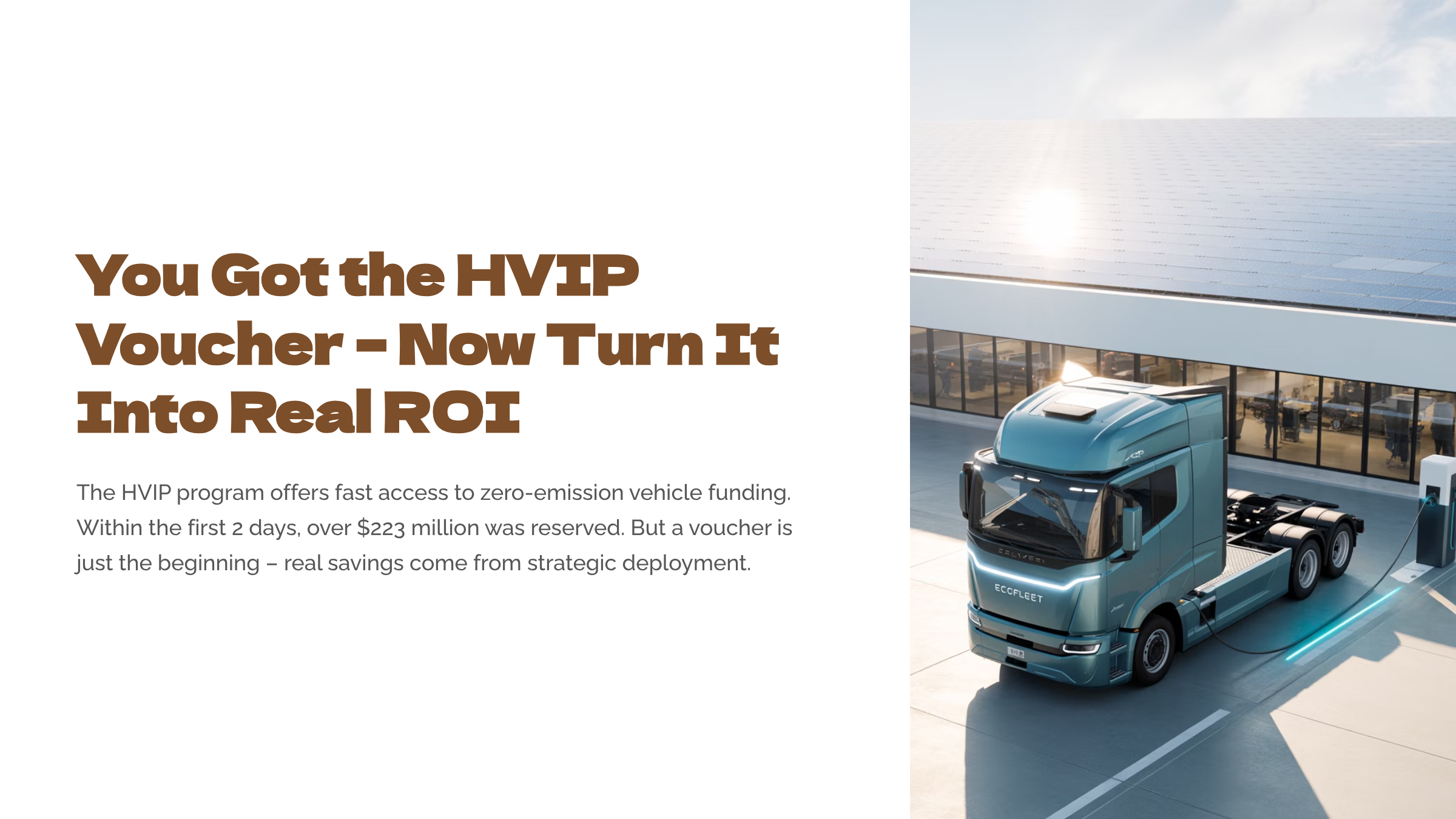
The HVIP program is one of the fastest ways fleets can access significant funding for zero-emission vehicles. But competition is fierce, within the first 2 days, more than $223 million in funding was reserved. That’s why timing is everything.
If you’ve applied for a voucher, the notice could be a huge milestone. But remember: a voucher on paper is only the beginning. The real savings come from what happens next. Deploying clean vehicles successfully requires careful planning across infrastructure, operations, compliance, and training. Here’s where to focus to make sure your investment delivers lasting ROI.
- Plan for Charging Infrastructure
Getting a zero-emission vehicle is only half the story; you’ll need a place to charge or fuel it. Utility upgrades can take 12 – 24 months, and fleets that wait to engage utilities risk having vehicles arrive before chargers are energized. At Leke Services, we plan this for you – we help sequence vehicle delivery with infrastructure timelines, so you don’t end up with stranded assets.
Key next steps:
- Site Assessment: Evaluate your depot or facility for electrical capacity and space for chargers.
- Utility Coordination: Contact your local utility early. Upgrades can take months, and incentives may be available.
- Funding Stacking: Look into programs like CALeVIP, LCFS credits, or utility rebates to help cover infrastructure costs.
- Charging Strategy: Decide between depot charging, public charging, or mobile solutions based on your routes and dwell times.
For hydrogen vehicles, the planning is even more specialized—fueling stations are fewer and require different logistics.
- Train Your Team
Zero-emission vehicles come with new systems and workflows. We’ve seen fleets underestimate training – one untrained driver can void warranties, reduce range, or increase downtime.
Make sure your team is ready:
- Driver Training: Electric and hydrogen vehicles handle differently. Training improves safety and efficiency.
- Maintenance Staff: Technicians need to understand high-voltage systems, battery diagnostics, and new service intervals.
- Fleet Managers: Use telematics and energy management tools to monitor performance and optimize charging schedules.
- Update Your Operations
Route optimization with EVs can cut costs per mile by up to 25% when paired with telematics and smart charging. Fleets that don’t adapt schedules risk higher TCO than diesel.
Integrating clean vehicles into your fleet may require changes to:
- Routing and Scheduling: Account for charging time and range limitations.
- Fleet Mix: Decide which vehicles to replace, which to keep, and how to phase in new units.
- Data Reporting: HVIP requires usage tracking. Set up systems to collect and report data easily.
- Stay Compliant: Align with California’s Fleet Regulations
Securing an HVIP voucher is a strong first move, but it’s also a commitment. California’s regulatory landscape for commercial fleets is evolving rapidly, and HVIP-funded vehicles must meet specific compliance requirements or risk clawbacks or future ineligibility.
Here’s how fleets are getting it right:
- Track Usage and Reporting: HVIP requires annual usage reports and confirmation that vehicles remain domiciled and operated in California. Set up internal systems to track mileage, routes, and operational data.
- Integrate Compliance into Procurement: When planning future purchases, ensure new vehicles align with upcoming mandates. HVIP can help you meet these requirements early, but only if your fleet strategy is aligned.
- Coordinate with Legal and Sustainability Teams: Regulatory compliance isn’t just an operations issue—it affects ESG reporting, risk management, and public disclosures. Make sure all stakeholders are informed and aligned.
Why it matters: Leveraging HVIP incentives helps you stay ahead of the curve, but it also puts you under the microscope. Proactive compliance ensures you avoid penalties, maintain funding eligibility, and build a reputation as a forward-thinking fleet operator.
Stay tuned for our next article which will go into more detail on remaining compliant.
Final Thought: HVIP Is Just the Beginning
So HVIP is opening this week great. But the real question is: are you ready for what comes next? Securing a voucher is just step one. The transition to zero-emission fleets requires planning, investment, and coordination across your business.
When done right, HVIP can be a launchpad not just for cleaner vehicles, but for smarter, cost-effective operations.
Let Leke Services help you, we specialize in guiding businesses from funding to infrastructure development to operations and compliance, so you aren’t just buying the vehicles but building future-ready operations.


